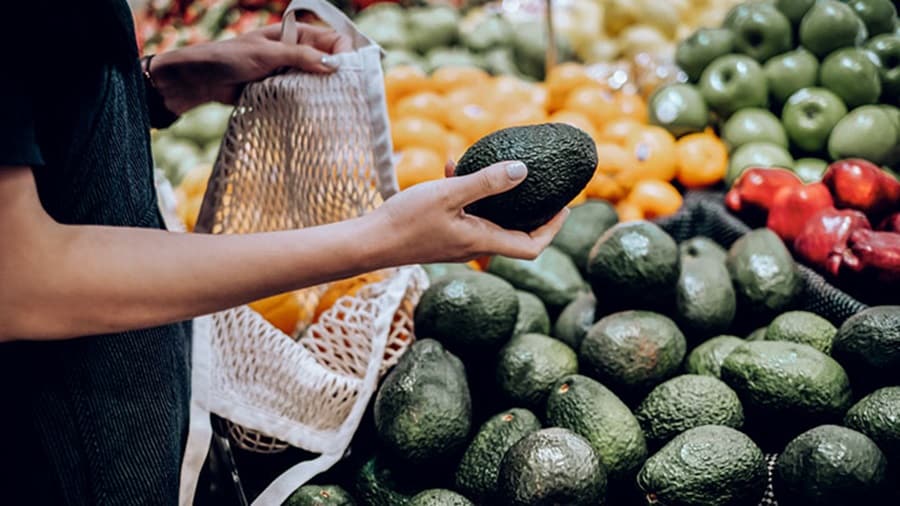Over the past year, food consumption and costs have captured significant public attention and become a conversation piece on news channels and around dinner tables. As all of us need to buy groceries, the impact of rising prices for perishable goods affects a huge number of consumers.
And as rising prices have resulted in a visible decline in consumer demand, it begs the question: how are recent developments influencing supply chains for these products, and what help is available to growers and retailers to manage such changes?
The impact of inflation on consumer behaviour and purchase intention for food
In the early stages of the Covid-19 pandemic, Europe's entire catering industry (predominantly restaurants, coffee shops and bars) faced significant losses, while retailers witnessed a surge in demand due to consumers switching to e-commerce and localised buying. As the market gradually regained its footing, a heightened desire for fresh products emerged. According to a McKinsey report on grocery retail for 2023, 31% of European consumers still try to focus on healthy eating.
Even so, substantial price increases due to a number of different factors are putting pressure on the market and progressively dampening consumer demand. In addition to the fallout from geopolitical dynamics, persistent inflation, and escalating living and energy costs, the pronounced impact of seasonal fluctuations on perishable goods is evident. Plus, rising input costs – including fuel, labour, fertilisers, and animal feed – are impacting the production expenses of fruits, vegetables, fish, meat, eggs, and other dairy products.
And it appears the general public are taking decisive action in the face of these rising prices, as McKinsey data reveals that 53% of European consumers plan to economise on food expenses in 2023. This shift in consumption patterns has made for reduced brand loyalty and a preference for more locally sourced, seasonal, and cost-effective fruits and vegetables - such as apples, carrots, and potatoes.

Germany's experience serves as a case in point for the significant price escalation observed over the past year. In June 2023, the cost of food and non-alcoholic beverages surged by 13.4% compared to the same month in the previous year (Trading Economics).
Italy further underscores this trend, as Fresh Plaza reports that demand for fresh fruits and vegetables experienced an 8% decline in the first quarter of this year compared to 2022.
It seems the situation isn’t going to get better overnight, either: a recent report by the European Union suggests food prices will remain above long-term averages for an extended duration with geopolitical shifts and supply chain restructuring continuing resulting in trade disruptions and cost increases.
Measurable impact on perishable products supply chains
Ongoing price rises and subsequent demand fluctuations have a significant impact on supply chains, affecting both producers and retailers.
Over the past year, a growing number of European businesses have embraced near-sourcing strategies. According to a Reuters report from 2022, 30% of European companies expected to change manufacturing locations in the near future. Poland and Germany lead the pack of considered locations in the EU, while Turkey and Morocco were favourable nearby.

The goal of near sourcing is to make supply chains shorter and more transparent, but it also introduces new challenges when it comes to transporting perishable products. Supply chains handling temperature-sensitive items become more vulnerable to market disruptions, with surges in demand or delays directly impacting product quality and shelf life – ultimately resulting in significant financial losses. Strict regulatory demands and the requirement for specialised infrastructure further add further complication.
To address these challenges, companies must adopt more resilient strategies and enhance cost efficiency.
Precise demand forecasting for perishable goods is a critical factor in optimising inventory management and mitigating financial losses. Through these measures, retailers can finetune inventory, thus preventing shortages and excess stock.
Another outcome of this trend, combined with heightened customer demand for transparency, is the increase importance of reducing food waste for perishable products. Currently, many businesses are revisiting their supply chain processes to find solutions for such a reduction.
Navigate complexity with the right logistics setup
With these multi-dimensional supply chain impacts in mind, businesses should consider four key consequences:
- Efficiency improvements in the supply chain due to shifting consumer behaviour Retailers need flexibility and resilience, not just during transportation, but throughout all sourcing, production and design phases. To keep supply chains as efficient as possible and protect margins, end-to-end solutions are invaluable. Multimodal options, which combine various transportation modes, offer the flexibility to choose the most suitable and time-sensitive transport methods for perishable products. This adaptability not only helps in optimising transit times but also ensures goods reach their destinations in the best possible condition, while reducing the risk of disruptions.
- Adoption of alternative sourcing options (such as local sourcing), leading to shorter delivery times and improved demand control Reducing middlemen and diversifying sourcing strategies can help to absorb economic impacts of global disruptions. An extensive and interconnected network plays a crucial role in assisting companies in this aspect. Specifically, having access to a broad warehouse and fulfilment network presents an opportunity to minimise the distance between final production and the end consumer.
In light of recent market developments, it is evident that numerous clients are shifting their sourcing strategies. Notably, countries such as Morocco, Greece, Egypt, and South Africa are playing a more and more significant role for the import of perishable goods to Europe. However, redirecting supply chains brings complexities. An interconnected network with global coverage, cold chain infrastructure, and a range of multimodal capabilities might enable companies in their ability to swiftly and cost-effectively deliver goods to their ultimate destinations - even in the face of cost pressures.
- Enhancing productivity while cutting costs and waste through intelligent production and sourcing strategies The challenge for market players is to reduce waste and conserve resources while satisfying demand. Adopting intelligent production methodologies holds the key to not only boosting productivity but also optimising resource use. This encompasses the integration of technology, data analysis, and automation to finely tune operations. With optimised logistics, the supply chain can be moulded into a dual-purpose solution: minimising waste and driving economic efficiency for long-term success.
- End-to-end supply chain and product sourcing visibility In the coming years, consumers will increasingly prioritise product origin and the transparency of supply chains. Consequently, for businesses engaged in trading such goods, the proximity between distribution centres and retail outlets emerges as a pivotal consideration.
A continuous monitoring system that encompasses the real-time location and condition of goods is therefore of paramount importance, especially for perishable items with a constant need of refrigeration. Digital solutions and new technologies will support businesses in their demand for permanent control of goods.
The sector of perishable products faces intricate obstacles such as evolving consumer preferences and dynamic economic conditions, potentially leading to prolonged periods of elevated food costs. In response, businesses need to adopt resilient strategies, addressing the intricacies of their supply chains. Forward-looking logistical solutions, including multimodal options, intelligent manufacturing methodologies and visibility throughout the whole journey, are therefore indispensable tools for producers and businesses seeking to navigate the evolving contours of the market landscape.
未来,您想随时了解必读行业趋势吗?
您已经完成了,欢迎“登船”!
很抱歉,发送您的联系请求时出现问题。
请查看表单字段,确保所有已正确填写所有必填信息。如果问题仍然存在,请联系我们的支持团队以获得进一步的帮助。
未来,您想随时了解必读行业趋势吗?
使用此表格注册,即可直接在您的邮箱中接收我们的洞察见解,进入一个真正的综合物流世界。简单操作,即从我们为您量身定做的精选文章中获得启发,了解相关行业洞察信息。您可以随时取消订阅。
I agree to receive logistics related news and marketing updates by email, phone, messaging services (e.g. WhatsApp) and other digital platforms, including but not limited to social media (e.g., LinkedIn) from A. P. Moller-Maersk and its affiliated companies (see latest company overview). I understand that I can opt out of such Maersk communications at any time by clicking the unsubscribe link. To see how we use your personal data, please read our Privacy Notification.
By completing this form, you confirm that you agree to the use of your personal data by Maersk as described in our Privacy Notification.













